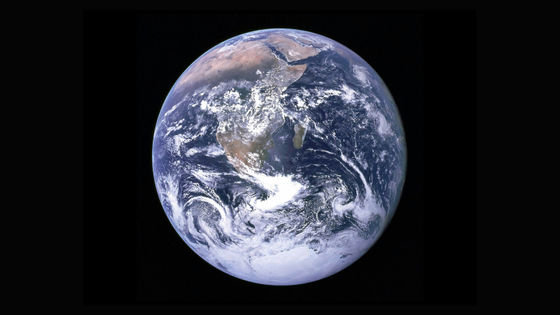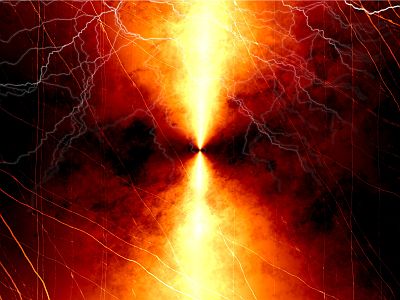Quantum physicists discover that weather patterns such as the movement of the Earth's atmosphere and ocean can be explained by treating the Earth as a quantum material state called a ``topological insulator''

Regarding the earth's air currents and ocean currents, there are phenomena whose principles have not been elucidated even by modern science, and one of these is a phenomenon called '
[2306.12191] Topological Signature of Stratospheric Poincare -- Gravity Waves
https://arxiv.org/abs/2306.12191
How Quantum Physics Describes Earth's Weather Patterns | Quanta Magazine
https://www.quantamagazine.org/how-quantum-physics-describes-earths-weather-patterns-20230718/

In 1966, meteorologist
On the other hand, various scientists have conducted research on equatorial Kelvin waves, but even in modern times the principle behind equatorial Kelvin waves has not been elucidated. The reason for this, says the overseas media Quanta Magazine, is that ``this is in the quantum realm, which geophysicists rarely venture into.''
Just as geophysicists generally do not address quantum, many quantum physicists do not address the mysteries of geophysical fluids. However, while Marston and his team have specialized in condensed matter physics, they have also been interested in climate physics and the behavior of fluids in the Earth's oceans and atmosphere.

Marston and his colleagues speculated that there may be some kind of relationship between geophysical waves and electrons moving in magnetic fields. So Marston's colleague Antoine Venaille suggested, ``Why not look into equatorial Kelvin waves?''
Marston and colleagues who conducted the analysis noticed that the dispersion relationship of waves along the equator and the dispersion relationship of electrons in a topological insulator are very similar. 'It's something that a condensed matter physicist would notice right away,' Marston said.
When a strong magnetic field is applied to the stacked structure of a semiconductor, a phenomenon called the ``

Objects that use this type of twist, such as ``even though the inside is insulating, the surface exhibits the same state as metal'' are called ``topological insulators.''
In 2017, Marston and his colleagues, along with Pierre Delplace, a physicist at the École Normale Supérieure of Lyon in France, proposed that
According to Marston et al., if we consider the Earth as a topological insulator, equatorial Kelvin waves can be considered the same as edge currents flowing at the edges of quantum materials. Equatorial Kelvin waves are sandwiched between two insulators, the northern and southern hemispheres, and in the northern hemisphere the fluid swirls clockwise due to the earth's rotation, while in the southern hemisphere it swirls counterclockwise, so the equatorial Kelvin wave between them So the waves move east.
Joseph Biello, an applied mathematician at the University of California, Davis, who was not involved in the study, said, ``Marston et al.'s discovery is the first to show why equatorial Kelvin waves occur.'' ``This discovery is simply 'We use fundamental principles such as topological insulators to explain phenomena, rather than deriving them from mathematical formulas.'
Venaille said, ``The properties of topological insulators may explain why the Earth's equatorial Kelvin waves continue to flow without changing their momentum even in the face of irregular weather conditions such as turbulence.Topological Insulation 'Just as the edge currents in the body flow without dissipation, ignoring impurities in the material, equatorial Kelvin waves are constantly in motion.'
In 2021, Marston and his colleagues discovered a movement in the atmosphere similar to the equatorial Kelvin wave called ``Poincaré wave'' that exists approximately 10 km above the atmosphere. This discovery confirms that Earth's fluids subjected to the Coriolis force behave like electrons in a topological insulator.
Marston et al.'s research opened the door to research that treats the Earth as a topological insulator. Anton Surov, a theoretical physicist at the University of Bath in the UK, and David Tong, a quantum physicist at the University of Cambridge, are conducting further research based on Marston's discoveries.

Related Posts:
in Science, Posted by log1r_ut







